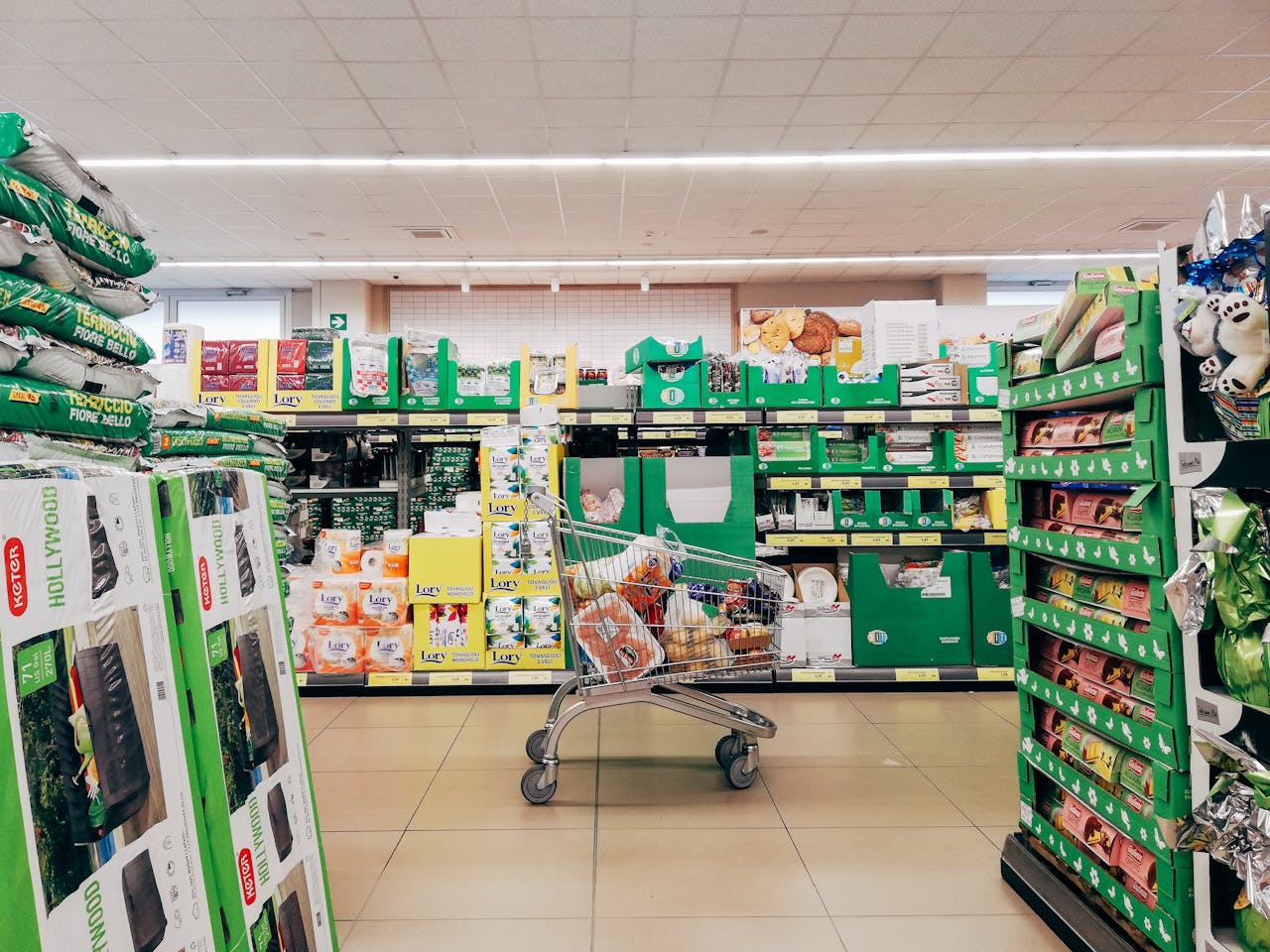
Image Source: pexels.com
Grocery shopping is getting more expensive, and it’s not just your imagination. Some supermarket sections are seeing prices rise faster than the overall rate of inflation. This matters because it hits your wallet every week, and it can make sticking to a budget feel impossible. You might notice your usual grocery bill creeping up, even if you’re buying the same things. Understanding which sections are most affected can help you make smarter choices. If you know where prices are rising fastest, you can adjust your habits and save money. Here’s what you need to know about the supermarket sections where prices are outpacing inflation.
1. Fresh Produce
Fresh produce is a staple in most shopping carts, but it’s also one of the sections where prices are rising the fastest. Weather events, supply chain issues, and labor shortages have all played a role. For example, droughts and floods can wipe out crops, leading to higher prices for fruits and vegetables. Transportation costs add even more pressure. You might see the price of lettuce, berries, or avocados jump from one week to the next. To save money, consider buying in-season produce or frozen alternatives. In-season fruits and vegetables are usually cheaper and taste better. Frozen produce can be just as nutritious and often costs less. If you have space, growing a few basics at home can also help cut costs.
2. Dairy Products
Dairy products like milk, cheese, and yogurt are seeing price hikes that outpace general inflation. Feed costs for cows, higher energy prices, and transportation challenges all contribute. When the cost of feed goes up, so does the price of milk. And since milk is the base for many other dairy products, those prices rise too. You might notice that a gallon of milk or a block of cheese costs more than it did last year. To manage these increases, consider store brands or bulk purchases during sales. Some shoppers are switching to plant-based alternatives, but those can also be pricey. If you use a lot of dairy, consider joining a warehouse club or using coupons to offset the cost.
3. Meat and Poultry
Meat and poultry prices have been climbing faster than many other grocery items. Several factors are at play, including feed costs, disease outbreaks, and processing plant disruptions. For example, avian flu can reduce the supply of chicken and eggs, causing prices to spike. Beef and pork are also affected by rising feed and labor costs. You might find that your favorite cuts of meat are now a luxury. To save, try buying less expensive cuts or switching to recipes that use less meat. Stretching meat with beans or vegetables can help your meals go further. Some shoppers are also exploring plant-based proteins as a way to cut costs. Keep an eye out for sales and consider freezing meat when you find a good deal. The meat section is one area where being flexible can really pay off.
4. Bakery Goods
Bakery goods like bread, rolls, and pastries are another section where prices are outpacing inflation. The cost of wheat and other grains has gone up, partly due to global events and supply chain issues. Energy costs for baking and transporting these goods also play a role. You might notice that your favorite loaf of bread or a pack of bagels costs more than it did a few months ago. To save, consider baking at home if you have the time and interest. Store brands are often cheaper than name brands, and buying in bulk can help if you have freezer space. Some shoppers are also cutting back on bakery treats or switching to simpler options like tortillas or flatbreads, which can be less expensive.
5. Snacks and Packaged Foods
Snacks and packaged foods are convenient, but they’re also getting more expensive. The cost of packaging, transportation, and ingredients like oils and grains has gone up. You might see higher prices on chips, crackers, cookies, and even cereal. These items are often heavily marketed, but that doesn’t mean they’re a good value. To save, try making your own snacks at home or buying in larger packages. Look for sales and use coupons when you can. If you’re willing to switch brands, you can often find similar products for less. Reducing your reliance on packaged snacks can also help your budget and your health.
6. Beverages
Beverages, including coffee, juice, and soft drinks, are another section where prices are rising faster than inflation. Coffee prices, in particular, have been hit by weather problems in major growing regions. The cost of aluminum for cans and plastic for bottles has also increased. You might notice that a 12-pack of soda or a bottle of juice costs more than it used to. To save, consider switching to tap water or making your own coffee at home. Buying larger containers instead of single servings can also help. If you enjoy specialty drinks, try limiting them to special occasions. Small changes in your beverage habits can add up to big savings over time.
Smart Shopping in a Changing Market
Grocery prices are changing fast, and some supermarket sections are feeling it more than others. Knowing where prices are outpacing inflation can help you make better choices. Focus on flexibility—try new brands, switch to in-season items, and look for sales. Small changes in your shopping habits can make a big difference. Staying informed and being willing to adapt is the best way to keep your grocery bill under control.
How have rising prices in these supermarket sections affected your grocery shopping? Share your tips or experiences in the comments.
Read More
